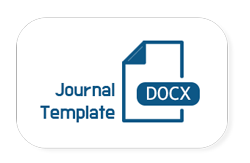Meconium-stained Amniotic Fluid in Labour: A Correlation with Mode of Delivery and Perinatal Outcome at Maitama District Hospital Abuja, Northcentral Nigeria
Meconium-stained Amniotic Fluid and Perinatal Outcome
Abstract
Background: Meconium-stained amniotic fluid (MSAF) has been associated with adverse labour outcomes with increased perinatal morbidity and mortality.
Aim and Objectives: To determine and compare the mode of delivery and perinatal outcomes in low-risk pregnant women at term with and without meconium-stained amniotic fluid in labour.
Methods: A prospective comparative cross-sectional study involving 260 women with low-risk pregnancy at term presenting with MSAF and clear amniotic fluid (CAF) in labour at Maitama District Hospital, Abuja, between January 7th 2021 and July 31th 2021. The participants were divided into two groups:130 in the MSAF group and 130 in the CAF group. Outcome measures were mode of delivery, Apgar scores at 1 and 5 minutes, need for active resuscitation, special care baby unit (SCBU) admission, and perinatal mortality. Data was analysed using the Statistical Package for Social Sciences version 24 (SPSS 24, IBM). Statistical analysis was done using chi square test and student t-test with the level of statistical significance set at P<0.05 at a confidence interval of 95%. Results: Mode of delivery was not significantly influenced by presence of MSAF, although caesarean section rate was higher for deliveries in the MSAF (24.6% vs 15.4%, P=0.103). The mean Apgar scores at 1 and at 5 minutes were significantly lower in the MSAF group (P<0.001). The need for active resuscitation with oxygen supplementation and SCBU admission was significantly greater for the MSAF group (P<0.001). All three perinatal deaths (1.2%) occurred in the MSAF group. Conclusion: MSAF, especially when significant, is associated with higher operative intervention rate in form of caesarean section and instrumental vaginal delivery, lower Apgar scores, and a greater need for resuscitation and SCBU admission due to birth asphyxia and meconium aspiration. Increased intrapartum surveillance with early obstetric intervention is recommended for labours complicated by MSAF to reduce adverse perinatal outcomes.
Published
Issue
Section
Categories
License
Copyright (c) 2025 Journalgurus

This work is licensed under a Creative Commons Attribution-NonCommercial-ShareAlike 4.0 International License.













.png)

